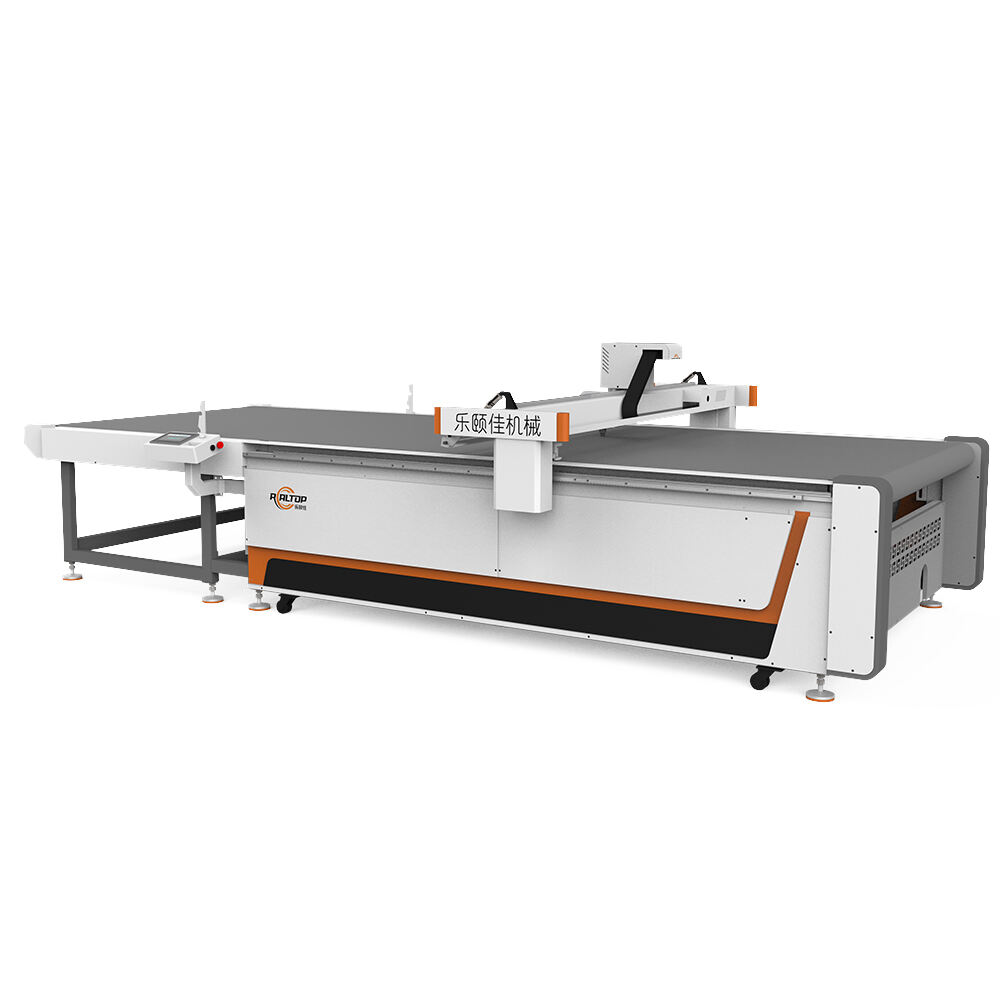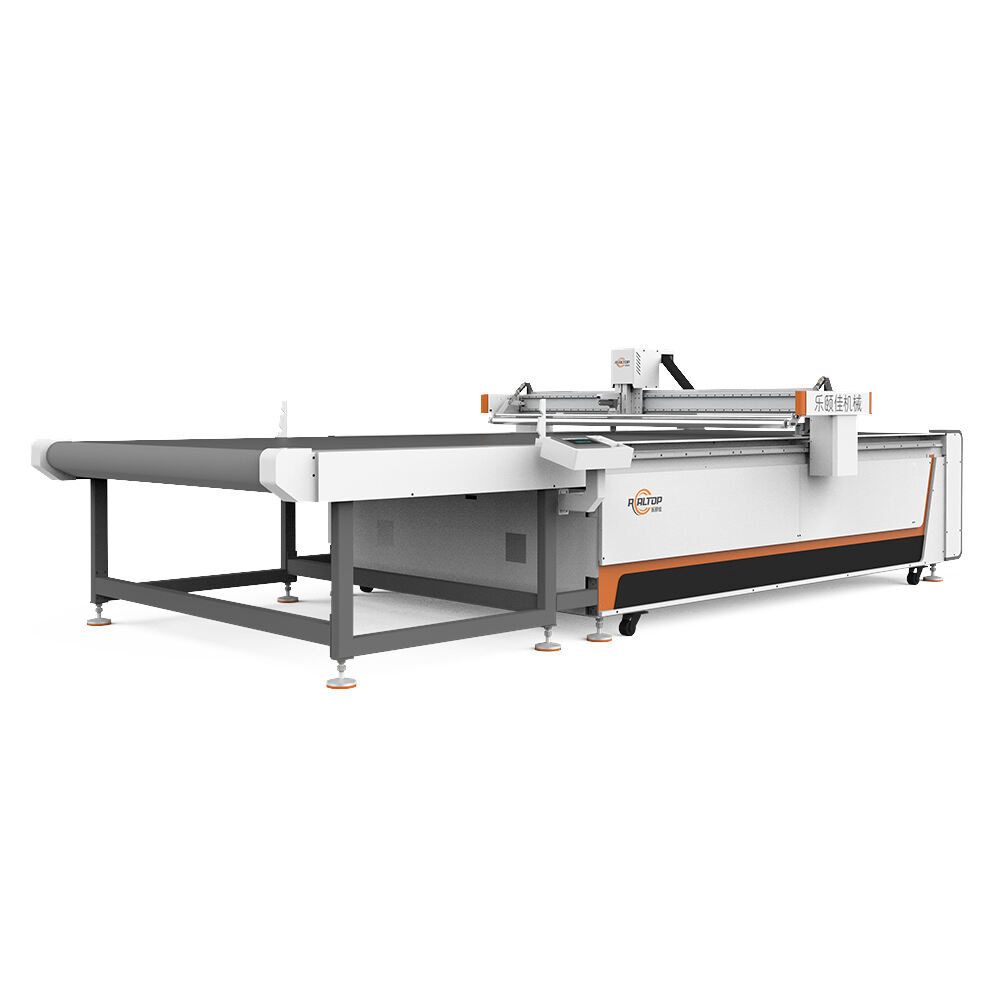What Materials Can Composite Cutting Machines Process?
Composite cutting machines are powerful tools designed to cut, shape, and trim composite materials with precision and efficiency. Composites—materials made by combining two or more distinct components to create a stronger, lighter, or more durable material—are widely used in industries like aerospace, automotive, construction, and manufacturing. Unlike traditional cutting tools that struggle with the unique properties of composites, composite cutting machines are engineered to handle their strength, thickness, and complexity. This guide explores the range of materials composite cutting machines can process, how they adapt to different composite types, and why they’re essential for modern manufacturing.
What Are Composite Cutting Machines?
Composite cutting machines are specialized equipment designed to cut composite materials accurately. They use advanced technologies like CNC (Computer Numerical Control) systems, laser cutting, waterjet cutting, or oscillating blades to handle the unique challenges of composites. These machines are programmed to follow precise patterns, ensuring clean cuts, minimal waste, and consistent results—even for complex shapes or thick materials.
What makes composite cutting machines different from standard cutting tools is their ability to handle the toughness of composites. Composites often combine rigid materials (like fibers) with flexible matrices (like resins), which can dull traditional blades or cause uneven cuts. Composite cutting machines address this with specialized tools, adjustable speeds, and pressure controls that match the material’s properties.
Common Composite Materials Processed by Composite Cutting Machines
Composite cutting machines are versatile, capable of processing a wide range of composite materials used across industries. Here are the most common types:
Fiber-Reinforced Polymers (FRPs)
Fiber-reinforced polymers are among the most widely used composites, made by combining polymer resins (like epoxy or polyester) with reinforcing fibers. Composite cutting machines handle several types of FRPs:
- Carbon Fiber Composites: These high-strength, lightweight composites are used in aerospace, racing cars, and sports equipment. Carbon fiber is stiff and abrasive, so composite cutting machines use diamond-tipped blades, laser cutters, or waterjets to avoid fraying or damaging the fibers.
- Glass Fiber Composites (Fiberglass): Fiberglass is durable, affordable, and resistant to corrosion, making it popular in boats, pipes, and construction panels. Composite cutting machines with oscillating blades or CNC routers cut fiberglass cleanly, reducing dust and fiber irritation.
- Aramid Fiber Composites (Kevlar): Known for their impact resistance and flexibility, aramid composites are used in body armor, ropes, and aerospace parts. Their toughness requires sharp, high-speed blades or waterjets to prevent fibers from pulling or breaking during cutting.
FRPs vary in thickness from thin sheets (used in car panels) to thick blocks (used in structural parts), and composite cutting machines adjust their speed and pressure to match, ensuring precise cuts at any thickness.
Wood Composites
Wood composites combine wood fibers, particles, or veneers with adhesives to create strong, uniform materials. Composite cutting machines process these materials efficiently:
- Plywood: Made by gluing layers of wood veneer together, plywood is used in furniture, flooring, and construction. Composite cutting machines with circular saws or CNC routers cut plywood cleanly, even for intricate shapes or large sheets.
- Particleboard and MDF (Medium-Density Fiberboard): These composites are made from wood particles or fibers mixed with resin. They’re dense and can produce a lot of dust, so composite cutting machines often include dust collection systems and sharp blades to prevent chipping.
- Laminated Composites: Wood composites layered with plastic or metal (like laminate flooring) require precise cutting to avoid delamination. Composite cutting machines with controlled pressure and slow, steady blades ensure layers stay bonded during cutting.
Wood composites are softer than fiber-reinforced polymers, but composite cutting machines still handle them with precision, reducing waste and ensuring smooth edges.

Metal Matrix Composites (MMCs)
Metal matrix composites combine metal alloys (like aluminum, titanium, or magnesium) with reinforcing materials (like ceramic fibers or carbon nanotubes). These composites are strong, heat-resistant, and used in aerospace engines, electronics, and industrial tools.
Cutting MMCs is challenging because they combine the hardness of metals with the abrasiveness of reinforcements. Composite cutting machines use:
- Waterjet Cutting: High-pressure water mixed with abrasive particles cuts through MMCs without generating heat, preventing warping or weakening of the metal.
- Laser Cutting: For thin MMC sheets, lasers melt through the material with precision, leaving clean edges.
- Diamond-Tipped Blades: These blades resist wear from abrasive reinforcements, making them suitable for thicker MMC parts.
Composite cutting machines ensure MMCs are cut to exact dimensions, critical for parts that need to fit together perfectly in high-performance applications.
Ceramic Composites
Ceramic composites combine ceramic materials (like alumina or silicon carbide) with fibers or particles to improve toughness and reduce brittleness. They’re used in high-temperature applications like turbine blades, brake pads, and industrial furnaces.
Cutting ceramic composites requires tools that handle their hardness without causing cracks. Composite cutting machines use:
- Waterjet Cutting: This method applies no heat or pressure, preventing ceramic composites from shattering.
- Laser Cutting: For thin ceramic composites, lasers make precise, clean cuts without physical contact.
- Diamond Grinding Wheels: These wheels grind through thick ceramic composites, creating smooth edges for structural parts.
Ceramic composites are fragile, so composite cutting machines use slow, controlled movements to avoid damaging the material during cutting.
Hybrid and Specialty Composites
Composite cutting machines also process less common but important composite materials:
- Concrete Composites: These combine concrete with fibers (steel, glass, or synthetic) to improve strength and flexibility, used in bridges, buildings, and roads. Composite cutting machines with diamond blades or waterjets cut through concrete composites, even when reinforced with steel bars.
- Plastic Composites: Made from recycled plastics mixed with wood fibers or minerals (like PVC composites), these materials are used in decking, fencing, and window frames. Composite cutting machines with sharp blades or routers cut plastic composites cleanly, avoiding melting or warping.
- Textile Composites: Used in automotive interiors, medical devices, and protective gear, these composites combine fabrics (like nylon or polyester) with resins. Composite cutting machines with oscillating blades or laser cutters handle their flexibility, ensuring precise cuts without fraying.
How Composite Cutting Machines Adapt to Different Materials
Composite cutting machines are not one-size-fits-all—they adapt to different materials using specialized features:
Tool Selection
The right tool for the material is key. For example:
- Abrasive materials (carbon fiber, ceramics) use diamond-tipped blades or waterjets.
- Flexible materials (textile composites, aramid) use sharp, oscillating blades to prevent tearing.
- Thick materials (MMCs, concrete composites) use high-power lasers or waterjets to cut through without strain.
Many composite cutting machines allow quick tool changes, so operators can switch from blades to lasers or waterjets as needed for different materials.
Speed and Pressure Control
Different materials require different cutting speeds and pressure:
- Hard materials (ceramics, MMCs) need slower, more powerful cuts to avoid damage.
- Soft materials (wood composites, plastic composites) use faster speeds with less pressure to prevent chipping or melting.
CNC systems in composite cutting machines store preset settings for common materials, ensuring consistent results every time. Operators can also adjust settings manually for custom composites.
Dust and Waste Management
Composites like fiberglass, carbon fiber, and wood composites produce dust or debris that can be harmful or messy. Composite cutting machines include:
- Dust collection systems to capture fine particles.
- Waterjets that use water to suppress dust and cool the material.
- Enclosed cutting areas to contain debris, protecting operators and keeping the workspace clean.
Industries That Rely on Composite Cutting Machines
Composite cutting machines are essential in industries that use diverse composite materials:
- Aerospace: Cuts carbon fiber and MMCs for lightweight, strong aircraft parts.
- Automotive: Processes fiberglass, carbon fiber, and plastic composites for car bodies, interiors, and components.
- Construction: Cuts plywood, concrete composites, and fiber-reinforced panels for buildings and infrastructure.
- Sports and Recreation: Shapes carbon fiber and aramid composites for bikes, helmets, and sports equipment.
- Manufacturing: Trims metal matrix composites and specialty composites for industrial tools and electronics.
In each industry, composite cutting machines ensure materials are cut accurately, efficiently, and safely, contributing to high-quality end products.
FAQ
Can composite cutting machines cut thick materials?
Yes. Composite cutting machines handle thick materials (up to several inches) using powerful tools like waterjets, laser cutters, or diamond blades. For example, waterjets can cut through 6-inch thick metal matrix composites or concrete composites with ease.
Do composite cutting machines damage composite materials?
No, when used correctly. Composite cutting machines use specialized tools, speed controls, and pressure settings to match the material, preventing damage like fraying, chipping, or delamination. For example, laser cutters seal carbon fiber edges to prevent fraying.
What’s the difference between a composite cutting machine and a standard cutter?
Standard cutters are designed for single materials (like wood or metal) and lack the tools or settings to handle composites. Composite cutting machines have specialized tools, adjustable speeds, and dust management systems to handle the unique properties of composites.
Can composite cutting machines cut complex shapes?
Yes. CNC-controlled composite cutting machines follow digital designs, cutting intricate shapes, curves, and patterns with precision. This is essential for industries like aerospace and automotive, where parts have complex geometries.
Are composite cutting machines safe to use?
Yes, with proper safety measures. They include features like enclosed cutting areas, dust collection, and emergency stops. Operators should wear protective gear (gloves, masks) when cutting materials like fiberglass or carbon fiber to avoid irritation.
 EN
EN
 AR
AR
 FR
FR
 DE
DE
 IT
IT
 KO
KO
 PT
PT
 RU
RU
 ES
ES



